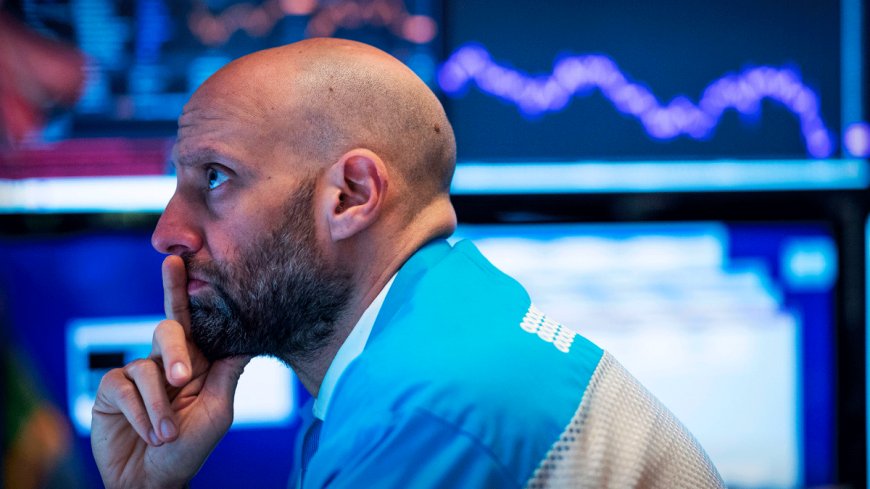Markets face a roller-coaster week
The stock market rebounded on Friday to the relief of many. But there's so much uncertainty that volatility will probably rule this week.

All last week, the stock market battled over whether it had reached a bottom.
And when the dust settled on Friday, you could argue a bottom had formed. The Standard & Poor's 500 Index (^IN) - Get Free Report and Dow Jones Industrial Average (^DJI) - Get Free Report ended down slightly on the week. The Nasdaq Composite Index (^COMPX) - Get Free Report showed a small gain.
If there's a bit of luck, this week will confirm if the bottom the major indexes appeared to put in is real. A confirmation, however, doesn't mean all is clear for stocks.
In fact, there may be too much else to think about.
Here's rundown of what investors should be watching.
Related: Is an ugly recession for the U.S. economy up next?
The conflict between Hamas and Israel. Any time violence erupts in the eastern Mediterranean, it means markets and the world will pay very close attention. Witness the oil-price jump late Sunday. Israeli Prime Minister Benjamin Netanyahu declared war on Hamas after a sudden attack Saturday morning across Israel. The New York Times said the fighting has resulted in an estimated 700 Israeli deaths and more than 400 Palestinians deaths. The United States has already sent war ships to the region. The Wall Street Journal reported that Iran officials appear to have helped plan the attacks. It's not clear what others, such as Russia or China, may do.
Oil prices. West Texas Intermediate crude oil fell nearly 9% last week to $82.79 per 42-gallon barrel. Brent crude, the global benchmark, was off 8.3% to $84.58. Prices, however, jumped more than 4% as soon as trading opened late Sunday in New York as the Middle East fighting raged on.
Inflation. Two reports this week will signal if the Federal Reserve's campaign to tame inflation is working. We start with the Producer Price Index report for September on Wednesday and the Consumer Price Index report for September on Thursday. Last month, the two reports suggested inflation was stronger than the Fed might want, but that was largely due to sharp increases in oil and gasoline prices.
Earnings. The third-quarter earnings season starts this week. PepsiCo (PEP) - Get Free Report leads things off on Tuesday. On Thursday, reports are due from Delta Air Lines (DAL) - Get Free Report, pharmacy chain Walgreens Boots Alliance (WBA) - Get Free Report, building supply distributor Fastenal (FAST) - Get Free Report and Domino's Pizza (DPZ) - Get Free Report. Friday starts the big financials' reports: health-insurance giant UnitedHealth Group (UNH) - Get Free Report, casualty insurer Progressive (PGR) - Get Free Report, money-management giant BlackRock (BLK) - Get Free Report, and banking giants JPMorgan Chase JPM, Citigroup (C) - Get Free Report, Wells Fargo (WFC) - Get Free Report, and PNC Financial (PNC) - Get Free Report.
Mortgage rates at 16-year highs
What looked like a quiet ending for the week came as interest rates moved to levels last seen in 2007. Rates have surged as the Federal Reserve has campaigned to rein in post-Pandemic inflation.
The 10-year Treasury yield looked as if it might top 5% for the first time since the summer of 2007. But the rate surge broke on Friday. Futures trading suggests rates may head lower on Monday
The yield on the security is an important determinant of long-term rates, especially mortgage rates. A 30-year mortgage will be probably be priced at about 7.5%. In 2021, the rate might be as low as 2.9%.
Rising rates has made buying an existing home difficult for first-time buyers. At the same time. Many homeowners with, say, 4% mortgages can't sell because they can't afford the mortgage on the next home.
Why a market bottom may have been reached
On Tuesday, in the midst of a nasty sell-off, the Dow, S&P 500 and Nasdaq all saw their relative strength indexes drop below 30.
This is a widely watched technical measure that can signal a market top (above 70 or 75) or a bottom, as in this case, when the reading drop below 30.
The indexes had dropped below 30 a week earlier, and the indexes recovered. What experience suggests is bottoms have been established for the three indexes: 23,916 on the Dow, 4,216 on the S&P 500 and 13,009 on the Nasdaq.
What's Your Reaction?


























































